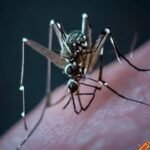Introduction: Brown house moths, scientifically known as Hofmannophila pseudospretella, are common household pests that can cause damage to stored food items, textiles, and other organic materials. These small moths are attracted to dark, warm, and humid environments, making homes and storage areas ideal breeding grounds. Infestations can quickly spiral out of control if left unchecked, leading to costly damage and inconvenience. In this comprehensive guide, we’ll explore various strategies and techniques for keeping brown house moths away from your house, ensuring a clean, pest-free living environment for you and your family.
Understanding Brown House Moth Behavior: Brown house moths are small, brownish-gray moths with a wingspan of approximately 15 to 20 millimeters. They are commonly found in homes, warehouses, and other indoor environments where they infest stored food products, clothing, carpets, upholstery, and other organic materials. Adult moths are nocturnal and are attracted to light sources, while larvae feed on a wide range of organic matter, including grains, cereals, dried fruit, pet food, wool, silk, and feathers.
- Proper Food Storage: One of the most effective ways to prevent brown house moth infestations is to store food items properly. Seal food products in airtight containers made of glass, plastic, or metal to prevent moths from accessing them. Pay special attention to grains, cereals, flour, rice, pasta, dried fruit, nuts, and pet food, which are commonly infested by brown house moths. Check expiration dates regularly and dispose of any expired or contaminated food items promptly.
- Maintain Cleanliness: Brown house moths are attracted to dirty and unsanitary conditions, so maintaining cleanliness indoors is essential for preventing infestations. Clean up spills and crumbs promptly, and vacuum floors, carpets, and upholstery regularly to remove food debris and potential moth eggs. Pay special attention to areas where food is stored, prepared, and consumed, such as kitchens, pantries, and dining areas, and clean these areas thoroughly to deter moths.
- Launder Clothing and Fabrics: Brown house moths are known to infest clothing, bedding, curtains, and other textiles made of natural fibers such as wool, silk, and cotton. To prevent infestations, launder clothing and fabrics regularly using hot water and detergent, and dry them on high heat to kill any moth eggs or larvae present. Store seasonal clothing and textiles in sealed containers or garment bags when not in use to protect them from moths and other pests.
- Use Moth Repellents: Moth repellents containing natural ingredients such as cedarwood, lavender, peppermint, or eucalyptus oils can be effective at deterring brown house moths. Place sachets filled with dried lavender or cedar chips in closets, drawers, and storage containers to repel moths and protect clothing and textiles. Alternatively, spray diluted essential oils onto cotton balls and place them in areas where moths are likely to infest.
- Monitor and Trap Moths: Monitoring and trapping brown house moths can help detect infestations early and prevent them from spreading. Place pheromone traps specifically designed to attract brown house moths in areas where moths are prevalent, such as kitchens, pantries, and closets. Check the traps regularly for signs of moth activity, such as trapped moths or eggs, and replace them as needed to maintain effectiveness.
Conclusion: Preventing brown house moth infestations requires a proactive approach that addresses food storage, cleanliness, fabric care, and the use of moth repellents and traps. By following these strategies and techniques, you can effectively keep brown house moths away from your house and protect your stored food items, clothing, and textiles from damage. Remember to be vigilant and proactive in your efforts to prevent moth infestations, as early intervention is key to avoiding larger problems down the road. With proper care and diligence, you can enjoy a pest-free home and peace of mind knowing that you’ve taken steps to keep brown house moths at bay.



